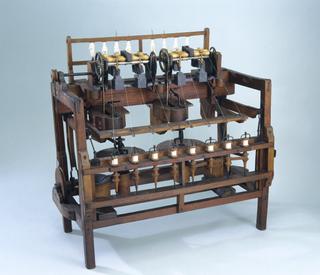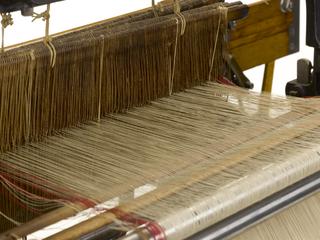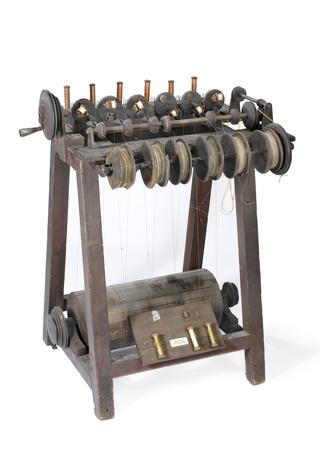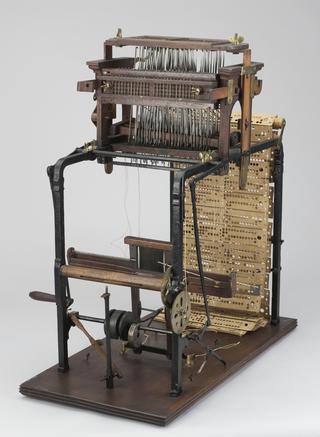
Hand loom for producing fancy smallware fabrics, 18th century.
This is an ornamental example of a loom for weaving by hand narrow fabrics such as braid and other trimmings. Such looms were used in Yorkshire in the latter half of the 18th century, and probably had their origin in Norway or Sweden. The warp is wound on a beam, which is turned by a handle and checked by a ratchet and pawl. Alternate sets of threads pass through 12 slots and 11 holes in a frame which can be lifted up. Lifting up the frame also lifts the warps which pass through the holes, and so a shed is formed. The weft is passed through the shed on the spool. A shed may be formed also by selecting certain warps and holding them up by means of one of the flat meshes, which may also be used for beating up. The woven material is kept taut by pinning it to the dress of the weaver.
Details
- Category:
- Textiles Machinery
- Object Number:
- 1912-383
- Materials:
- inlaid wood and mahogany
- Measurements:
-
overall: 300 x 220 x 330 mm
- type:
- hand loom
- credit:
- W. Horne and Sons




